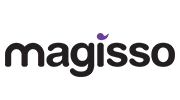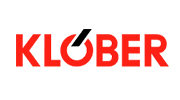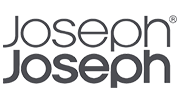Why specialty coffee needs to see more women in roasting

Specialty coffee prides itself on its inclusivity and progressiveness. But like many other industries, it is notably male-dominated, particularly in the trading and roasting sectors.
Historically, working in coffee was something of a “boy’s club”: an old-school, machismo workplace culture that excluded women from entering the industry. Pioneering women like Melitta Benz, Erna Knutsen, and Alice Foote MacDougall helped reshape this culture, showcasing the importance of women’s roles.
As third wave coffee emerged, trailblazing women continued to profoundly change the industry and open up new opportunities for career development. The same can be said for specialty coffee, with more women-owned businesses operating in the sector than ever before.
While female representation has certainly improved, there is room for further progress. To benefit from their expertise, skills, and perspectives, the coffee industry should encourage and support more women to work in roasting.
I spoke to coffee consultant Jodi Wieser, Sonja Grant, founder of Kaffibrugghúsið, and Shanita Nicholas, co-founder and co-CEO of Sip & Sonder, to learn more.
You may also like our article on how improving gender equity benefits coffee production.

Reflecting on women’s journey in coffee
Women have long played a crucial role in the coffee industry, especially in production. According to a 2018 report from the International Coffee Organisation, women and girls carry out approximately 70% of physical labour on coffee farms worldwide. Despite their significant contribution, few women hold leadership or decision-making positions in coffee, minimising their visibility and preventing them from advancing in the industry.
Women’s representation has also been limited in trading and roasting. Dominated by men, women were historically shut out from executive or senior roles in these sectors. But a pivotal moment came in the early 1970s when Erna Knutsen – who coined the term “specialty coffee” – was working at B.C. Ireland coffee brokerage in San Francisco.
Knutsen’s male co-workers refused to allow women into cupping rooms or roasteries, but after much perseverance, she was rightly able to work alongside her colleagues. Knutsen became a pioneer of small direct trade and changed the trajectory of the industry forever.
There have been a number of other resilient, dedicated women who have shaped third wave coffee culture over the years, but the journey hasn’t been without its challenges.
Jodi Wieser, a coffee consultant with over 20 years of experience, started her career as a barista. Over the last two decades, she co-founded Gather Coffee Company, instructed roasting, Q grading, and cupping classes in multiple countries, served as vice chair of the SCA Tasters Pathway Committee, and helped implement honey processing methods in several different origins.
“When I first started, I felt like I had to prove my expertise repeatedly when teaching a class to mostly men. In those days, having even one woman in a roasting or Q grading class was rare,” she says. “To this day, I’ve never seen a majority-female class, but I regularly see a majority-male class learning how to roast coffee.
“Over time, there’s been a gradual shift as more women enter the industry at various levels, and their contributions are becoming increasingly recognised.”
Overcoming barriers to career progression
Gender inequity is a sad reality in many industries, including coffee. The World Economic Forum’s 2023 Global Gender Gap report found the gap in economic opportunity closed at 68.4%. At this rate of progress, it will take 131 years to reach full parity.
The barriers for women working in coffee stem from historical institutional biases that they weren’t “capable” of having a professional career in the industry. Thankfully, these prejudices are largely behind us in specialty coffee today, but obstacles to improving female representation across the supply chain still remain.
Shanita Nicholas started her coffee career over two decades ago when she was a chemical engineering student at Columbia University in New York. She has since co-founded coffee shop and roaster Sip & Sonder and Sonder Impact, an affiliated non-profit which works to empower people of colour.
“In my early years in coffee, I was surrounded by incredibly intelligent men and women in the field and had the opportunity to learn from respected figures. What stood out to me was the norm with which men were treated in the field and the automatic respect and reverence provided to them, which shifted in conversations regarding women,” she says. “The focus was less on their daring work, intellect, and abilities and more on their ‘otherness’ simply because they’re women. There were also significantly fewer women in the room than men.”
Jodi agrees, saying the lack of female representation in roasting is not due to disinterest but rather a combination of obstacles. These include gender biases, lack of support for learning and training, and the demanding nature of roasting, which includes long hours and intense physical labour.
She tells me that “to overcome these, the industry needs to join efforts in providing more opportunities for women and continuing innovation in the roastery”.

Women have been pushing to improve their representation
Today, men are still significantly more visible across all levels of the coffee supply chain. This is even noticeable at competitions; a woman has yet to win the World Coffee Roasting Championship, while it took 19 years before a woman was crowned World Barista Champion when Agnieszka Rojewska placed first.
However, the push to increase the representation of women, particularly in roasting, has been ongoing for some time.
Sonja Grant founded the Icelandic roastery Kaffibrugghúsið in 2014 and hosts roasting workshops and seminars every year. In the years prior, she has worked at numerous women-led coffee companies.
“I’m lucky to come from Iceland because of our cultural background. We had a female president from 1980 to 1996 and she was, and still is, an amazing role model for women in Iceland,” she says. “When I first started as a barista in September 1995, I worked at a women-run roasting company called Kaffitár, established 1989 and owned and operated by Addy Héðinsdóttir.
“Addy was the only woman in Iceland to roast coffee and I had never met a male roaster at the time,” she adds. “Addy trained a few other women in Iceland to roast and some of them are still roasting now. We went to the SCAA and SCAE trade shows every year and got to know many male roasters, but not many female roasters, before the year 2000.”
Sonja further emphasises the importance of mentorship and how exposure to other women in the industry can encourage them to start working in the sector.
“I met Trish Rothgeb over 20 years ago when she was roasting at a workshop in Oslo, Norway,” she tells me. “It was inspiring to meet her; I hadn’t met many female roasters before, except the women I worked with at Kaffitár in Iceland.”
#ShesTheRoaster: Taking steps towards increasing visibility
As women in coffee have pushed for better representation, a number of organisations and movements have launched that support their efforts and fuel further change.
“We have seen the emergence of initiatives like #shestheroaster and organisations dedicated to supporting women in coffee in recent years,” Jodi says. “By including women in every part of the value chain, including roasting, we can take into account different perspectives and achieve better outcomes, which only strengthens our industry.”
Groups such as Strong Women of Coffee and the Kore Directive and organisations like the International Women’s Coffee Alliance offer resources, mentorship, support, and a sense of community to women (including self-identifying womxn) working in the industry.
“I’m so proud to see women in visible leadership roles and in almost every job position in the industry,” Jodi adds. “However, we still need to do a lot of work to achieve true gender parity.”
The benefits of encouraging female participation in roasting and beyond are considerable. The World Bank stated in 2012 that empowering women not only improves their own wellbeing, but also supports the wellbeing of their families and wider communities.
“The impact of an increased female presence in coffee is globally charged, and creates the ability for women across origins to see themselves as part of a larger industry,” she explains. “This level of involvement and visibility not only increases innovation, it also creates more opportunities for families and communities. It carves out a pathway for engagement and provides a sense of belonging. When anyone feels sustained, respected, and part of a larger whole, quality of life for that individual, their family, friends and communities are positively affected.”

How specialty coffee can encourage more women to roast
Jodi mentions four ways in which the coffee industry can embolden more women to work in roasting:
- Create more mentorship and training opportunities
- Celebrate women’s achievements
- Encourage diversity in hiring processes to include women, especially for male-dominated roles
- Provide automated assistance to help with intense physical labour i.e. moving green coffee sacks around a roastery
“It would be great to see more women lead in creating best practices for our industry,” she adds. “I would also love for a woman to write a book about roasting.”
Shanita, meanwhile, says: “Access to education is key, whether it’s traditional programmes or apprenticeship opportunities. By providing an entry point to women interested in exploring roasting that allows them to fail and grow and ultimately succeed (not always in that order), more women will see a path for sustained success in the industry.”
Lastly, Sonja points out that roastery positions extend further beyond machine-facing roles, and we need to account for different needs and preferences.
“Over time, my interests and focus have changed. My current business partner Njáll is more interested in the technical aspect of roasting,” she says. “My job is to host, execute roastery tasks, meet with people, lead seminars and trainings, prepare orders and so on.”

Over the last few decades, the coffee industry has made great strides in improving gender equity in the supply chain. While there are more women-owned roasteries and businesses than ever before, increasing female representation in specialty coffee is an ongoing challenge.
The push for gender parity requires a concerted effort from everyone working in coffee. Improving access to education and mentorship will play a key role, as well as establishing fairer and more equitable hiring practices. In turn, the coffee industry stands to gain a wealth of knowledge from including the perspectives and experiences of more women.
Enjoyed this? Then read our article talking to women in roasting.
Perfect Daily Grind
Want to read more articles like this? Sign up for our newsletter!









